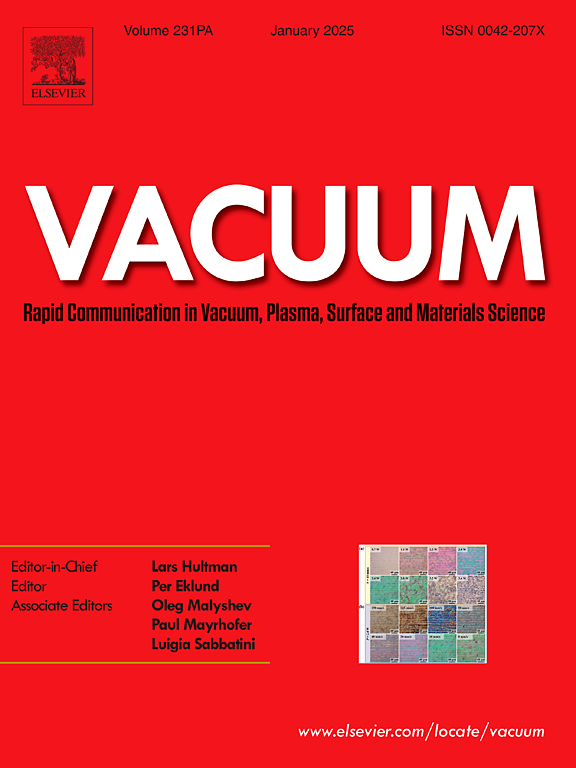Influence of oxygen addition on the structure, mechanical and thermal properties of TiSiN coating
IF 3.8
2区 材料科学
Q2 MATERIALS SCIENCE, MULTIDISCIPLINARY
引用次数: 0
Abstract
In this study, the effect of oxygen content on the structure and properties of (Ti1-xSix)(OyN1-y)z coating is investigated. In (Ti1-xSix)(OyN1-y)z coatings, oxygen substitutes nitrogen atoms in TiSiN, forming a single-phase cubic solid solution structure. A small amount of oxygen addition has slight effect on the compressive stress of the coating from −8.35 ± 0.05 GPa for Ti0.83Si0.17N1.02 to −8.61 ± 0.02 GPa for (Ti0.83Si0.17)(O0.10N0.90)1.28, while further increasing oxygen leads to a drop in the compressive stress to −7.76 ± 0.05 GPa for (Ti0.82Si0.18)(O0.21N0.79)1.44 and −4.55 ± 0.01 GPa for (Ti0.82Si0.18)(O0.52N0.48)1.71. The hardness of Ti0.83Si0.17N1.02, (Ti0.83Si0.17)(O0.10N0.90)1.28, (Ti0.82Si0.18)(O0.21N0.79)1.44 and (Ti0.82Si0.18)(O0.52N0.48)1.71 coatings are 39.5 ± 0.9, 38.1 ± 0.6, 36.9 ± 1.0 and 30.5 ± 0.9 GPa, respectively, which can be maintained up to ∼ 1100 °C due to the suppressed grain growth. However, the addition of oxygen reduces the oxidation resistance of TiSiN coatings.
求助全文
约1分钟内获得全文
求助全文
来源期刊

Vacuum
工程技术-材料科学:综合
CiteScore
6.80
自引率
17.50%
发文量
0
审稿时长
34 days
期刊介绍:
Vacuum is an international rapid publications journal with a focus on short communication. All papers are peer-reviewed, with the review process for short communication geared towards very fast turnaround times. The journal also published full research papers, thematic issues and selected papers from leading conferences.
A report in Vacuum should represent a major advance in an area that involves a controlled environment at pressures of one atmosphere or below.
The scope of the journal includes:
1. Vacuum; original developments in vacuum pumping and instrumentation, vacuum measurement, vacuum gas dynamics, gas-surface interactions, surface treatment for UHV applications and low outgassing, vacuum melting, sintering, and vacuum metrology. Technology and solutions for large-scale facilities (e.g., particle accelerators and fusion devices). New instrumentation ( e.g., detectors and electron microscopes).
2. Plasma science; advances in PVD, CVD, plasma-assisted CVD, ion sources, deposition processes and analysis.
3. Surface science; surface engineering, surface chemistry, surface analysis, crystal growth, ion-surface interactions and etching, nanometer-scale processing, surface modification.
4. Materials science; novel functional or structural materials. Metals, ceramics, and polymers. Experiments, simulations, and modelling for understanding structure-property relationships. Thin films and coatings. Nanostructures and ion implantation.
 求助内容:
求助内容: 应助结果提醒方式:
应助结果提醒方式:


